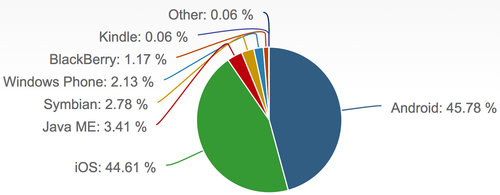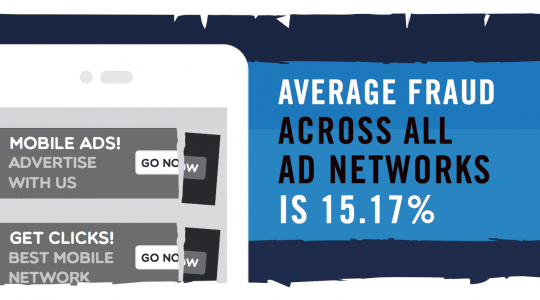Attribution Analytics (AA), formerly known as MobileAppTracking (MAT), by TUNE provides many levels of mobile analytics for apps, with a particular strength in attribution and reconciliation across advertising channels and partners. The purpose of attribution analytics is to definitively determine which ad click is responsible for a conversion event, and pass this data on to ad networks, third-parties, and internal business intelligence systems. This knowledge is essential to mobile marketers and advertising partners as it enables campaigns to be accurately measured and optimized, and ensures ad spend is allocated in the most meaningful way.
Google Analytics (GA) also offers attribution analytics for mobile app installs. From a high level, the attribution services offered by AA and GA might seem similar, however, there are several fundamental characteristics that distinguish the two platforms. For app developers and mobile marketers contemplating between the attribution analytics offered by AA and those provided by GA, the following section can help you understand how to differentiate these products and inform your selection process.
5 Key Differences Between Attribution Analytics by TUNE and Google Analytics
1 – Industry Position
Attribution Analytics is an unbiased, third-party partner. These characteristics are fundamental to our identity and the role we play in the industry. To understand why we feel passionately about the value these attributes add to the industry and to individual partnerships, it’s helpful to consider them independently:
The value of a third-party partner: It is not uncommon for a mobile marketer’s internal data to be inconsistent with data provided by a publishing partner. Reconciling inconsistencies with a third-party partner brings an increased level of transparency to the industry and helps ensure your marketing ad spend is achieving its maximum reach. Putting total trust in a single entity without a way to independently verify data introduces vulnerability that can only be resolved through a third-party partnership.
The value of an unbiased partner: AA is a completely unbiased platform – meaning that we don’t favor a particular partner and we are agnostic to mobile measurement methods. We enable marketers to utilize the measurement method and device identifiers that are in harmony with their privacy polices and are most appropriate to their specific use case.
AA technology is built with the simple intent of supporting mobile marketers, and making mobile marketing better for every player in the mobile ecosystem. As an Attribution Analytics client you own your data. We don’t sell your data, receive a percent of sales, or use our product to funnel clients to a particular ad network or publisher.
Google Analytics is not a third-party, unbiased partner. Although GA does not sell your data or receive a percent of sales, they do have one of the largest ad networks on the web — and GA is broadly recognized as a service designed to funnel marketers towards AdWords. There’s nothing inherently wrong with this strategy – but it’s important to recognize that using GA for attribution analytics is fundamentally different than a partnership with a third-party analytics provider like AA.
2 – Number of Integrated Partners
At TUNE we genuinely believe that the right partnerships can empower you and your organization to accomplish goals that would not otherwise be possible. AA is integrated with over 600 ad networks and publishing partners, and provides tools and resources to help you identify partners that match your needs in terms of type, platform, region, pricing model, and other important characteristics.
Because the AA SDK is integrated with so many reliable partners around the globe, testing and experimenting with new partnerships is incredibly easy. Whether you’re interested in taking your app to new markets, or experimenting with a new channel, having the resources to identify the partners best suited to help you accomplish your goals is a major asset.
GA currently does not have integrated partners, though they have decided recently to support six players in the industry.
3 – Share Data with Ad Partners, Third-Parties, and Internal BI Systems
As mentioned earlier, AA clients own their data. A fundamental characteristic of data ownership is the ability to freely share it based on one’s own privacy policy, and AA is deliberately designed to enable you to automatically pass conversion data to the systems you rely on. These include:
Ad Partners: When AA measures a conversion, it determines which partner is responsible for generating the event, and then attributes credit to the proper partner accordingly. Ad partners that are integrated with AA can receive this conversion data through postback URLs.
AA provides marketers with access to predefined postback “templates” to easily facilitate the data transfer. If a partner requests additional information (such as the app ID or advertiser ID), this information can be appended to the URL and automatically passed to the partner. These templates make it possible to set up notifications for installs, registrations, purchases, and other events.
Third-Parties: Through the postback URLs and templates described above, third-parties (which are usually other technology platforms) can also automatically receive conversion data. For example, suppose an organization uses Mixpanel or Swrve for in-app analytics and Leanplum for optimizing the mission-critical metrics of the app. For organizations that work with multiple third-party providers, ensuring each partner receives the right data in a timely manner is a major challenge. With the URL postback templates, the appropriate data can be passed along to each partner with ease.
Internal Business Intelligence Systems: Many organizations have internal business intelligence (BI) systems – particularly at the enterprise level. Manually exporting data from third-party systems and importing it into an internal BI system is not only inconvenient, it also introduces the possibility of bad data (through human error in the manual process).
AA enables internal systems to receive data in two different ways: through postback URLs, or pulled from the API. Passing data through these methods enables internal systems to be updated more quickly, removes the burden of the manual export/import task, and eliminates opportunity for human error.
The ability to automatically pass data to ad partners, third-parties, and internal systems, is the most notable distinction between AA and GA. This functionality enables you to ensure that every partner or system you work with is operating on the same data, empowering each party to better understand campaign performance and optimize your campaigns.
4 – iOS Reach
Because AA is a third-party provider, it is not confined to a particular operating system. Consequently, AA is able to attribute installs on all major operating systems including iOS, Android (including Amazon), and Windows. Until recently, Google Analytics was unable to attribute iOS installs, and as things currently stand, GA is only able to attribute iOS installs associated with the following third-party ad networks: Aarki, Tapjoy, MdotM, Millennial Media, AppLovin. GA also supports Google’s own YouTube and AdMob.
Considering that iOS tablets and smartphones account for nearly 45 percent of the total market share, and that iOS users are seven times more active online, the inability to measure iOS attributions on a broader scale (i.e. not limited to small set of partners) is a significant disadvantage.
5 – Support
Mastering a new product or service without easy access to support typically requires a lot of trial and error. In the attribution analytics space, a trial-and-error strategy can result in a lot of bad data and costly missed opportunities. Google Analytics is a free product, but unless you’re paying $100K+ per month on advertising, access to support is very limited.
AA offers every client a dedicated account manager and access to 24/7 support via phone or a ticket system. In addition, AA has an extensive library of support documentation and continuous free training webinars, enabling our clients to feel confident and supported in their marketing efforts. This combination of support resources enables AA customers to minimize the learning curve and have confidence that marketing campaigns are being measured as intended.
Leveraging the AA and GA Integration
A recent study of mobile analytics found that only 30 percent of developers use GA as their primary analytics provider. In other words, the majority of developers are using more than just GA to gain insight into the performance of their mobile apps.
The good news is that Google Analytics is one of Attribution Analytic’s integrated partners. For organizations whose systems are designed around GA, or for those that use GA for in-app analytics, the complementary features and functionality made available through the AA integration can provide increased insight into campaign performance and facilitate new opportunities for growth and expansion.
For example, through the AA integration, organizations that rely on GA are able to access AA 600+ partner network, extend their iOS reach, and most importantly, utilize AA’s server postback capabilities to automatically send conversion data to GA and other critical systems.
In Summary
From a high level, the attribution analytics offered by Attribution Analytics and Google Analytics might appear to have many similarities. However, as described above, there are several fundamental characteristics that distinguish the two platforms. Most notable is AA’s ability to automatically send postback data to internal and external systems, which enables mobile marketers, ad partners, and third-parties to better understand performance and optimize campaigns. For organizations contemplating between the attribution analytics offered by AA and those provided by GA, understanding the key differences between each platform can help inform the selection process.
The prevalence of Google Analytics in the online space has made it a common selection for mobile analytics. As an integrated AA partner, the in-app analytics provided by GA combined with the attribution analytics and resources of Attribution Analytics, enable the platforms to work together and provide marketers with increased transparency, new opportunities for growth, and enhanced campaign optimization capabilities.
Author
Becky is the Senior Content Marketing Manager at TUNE. Before TUNE, she handled content strategy and marketing communications at several tech startups in the Bay Area. Becky received her bachelor's degree in English from Wake Forest University. After a decade in San Francisco and Seattle, she has returned home to Charleston, SC, where you can find her strolling through Hampton Park with her pup and enjoying the simple things in life.



great post you have done here. i wish you to check Virgin Media Contact Number, Virgin Media Email helpline number